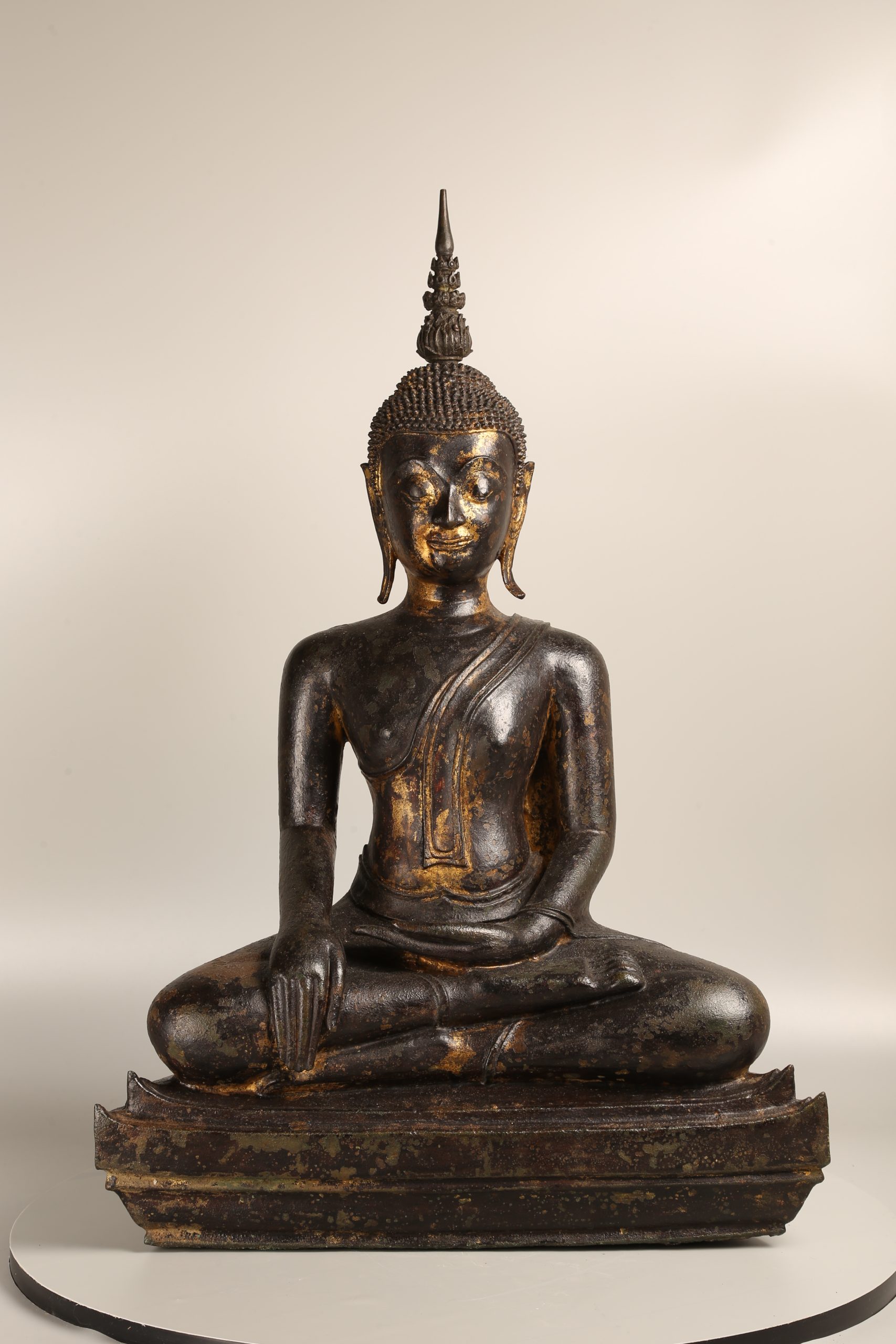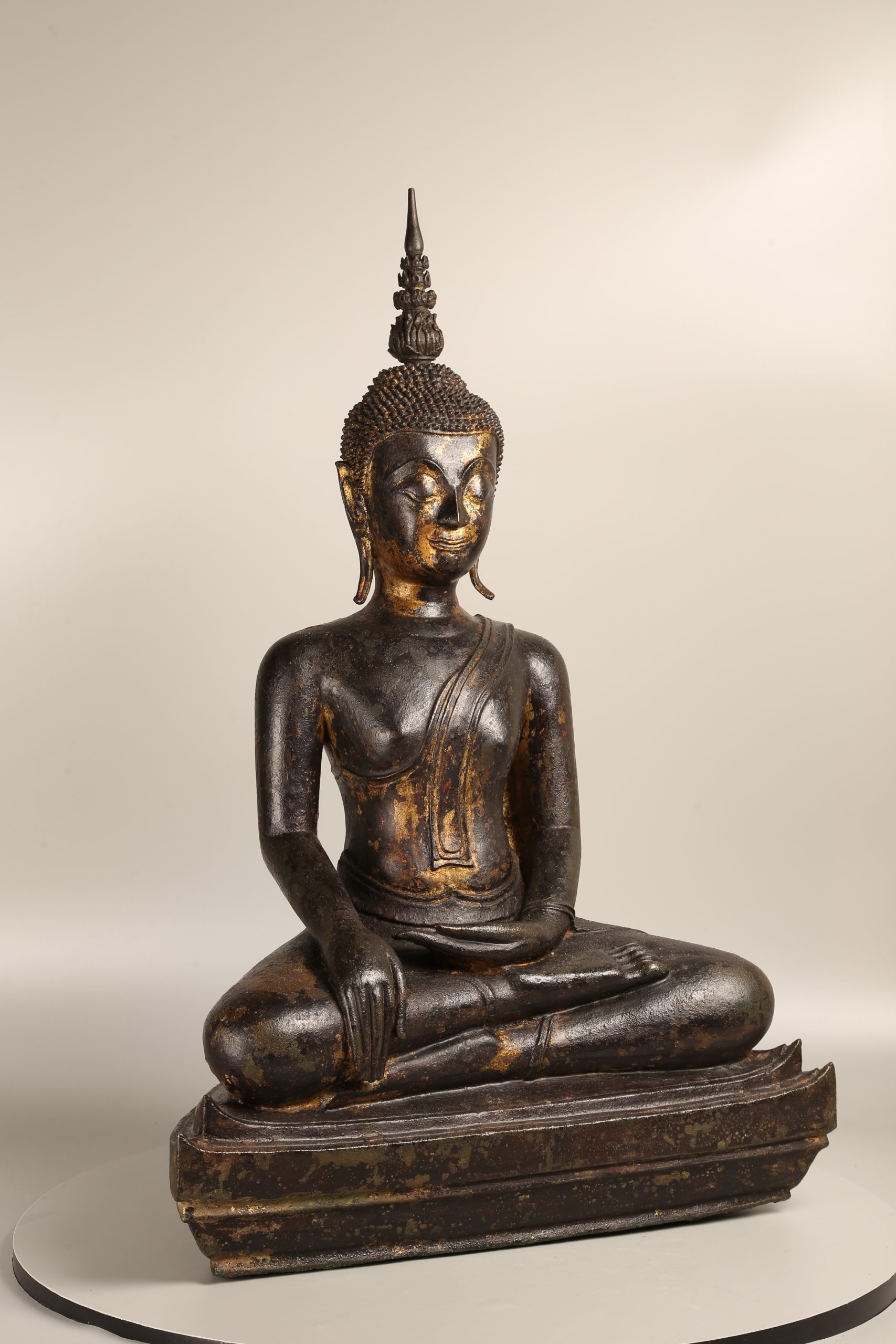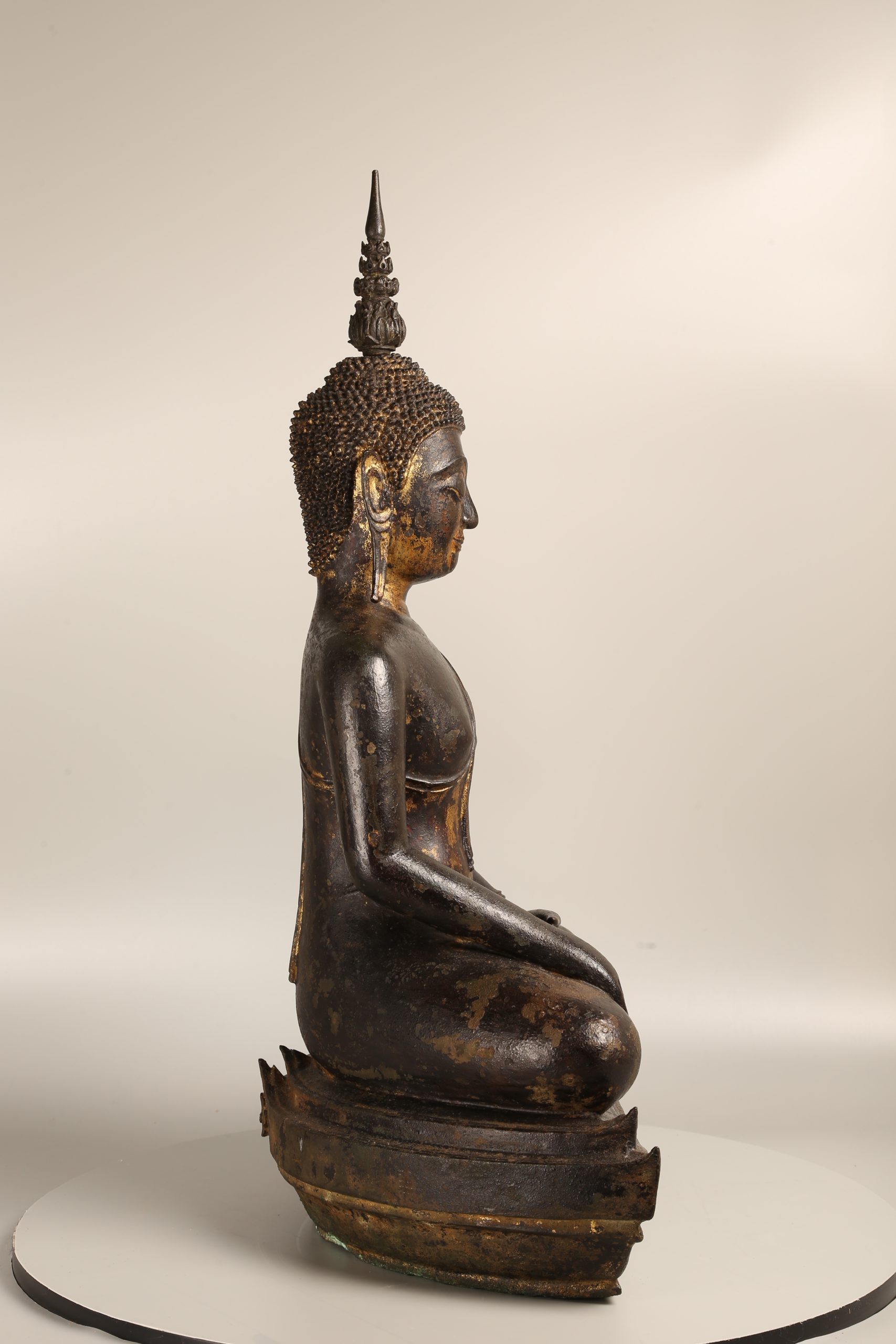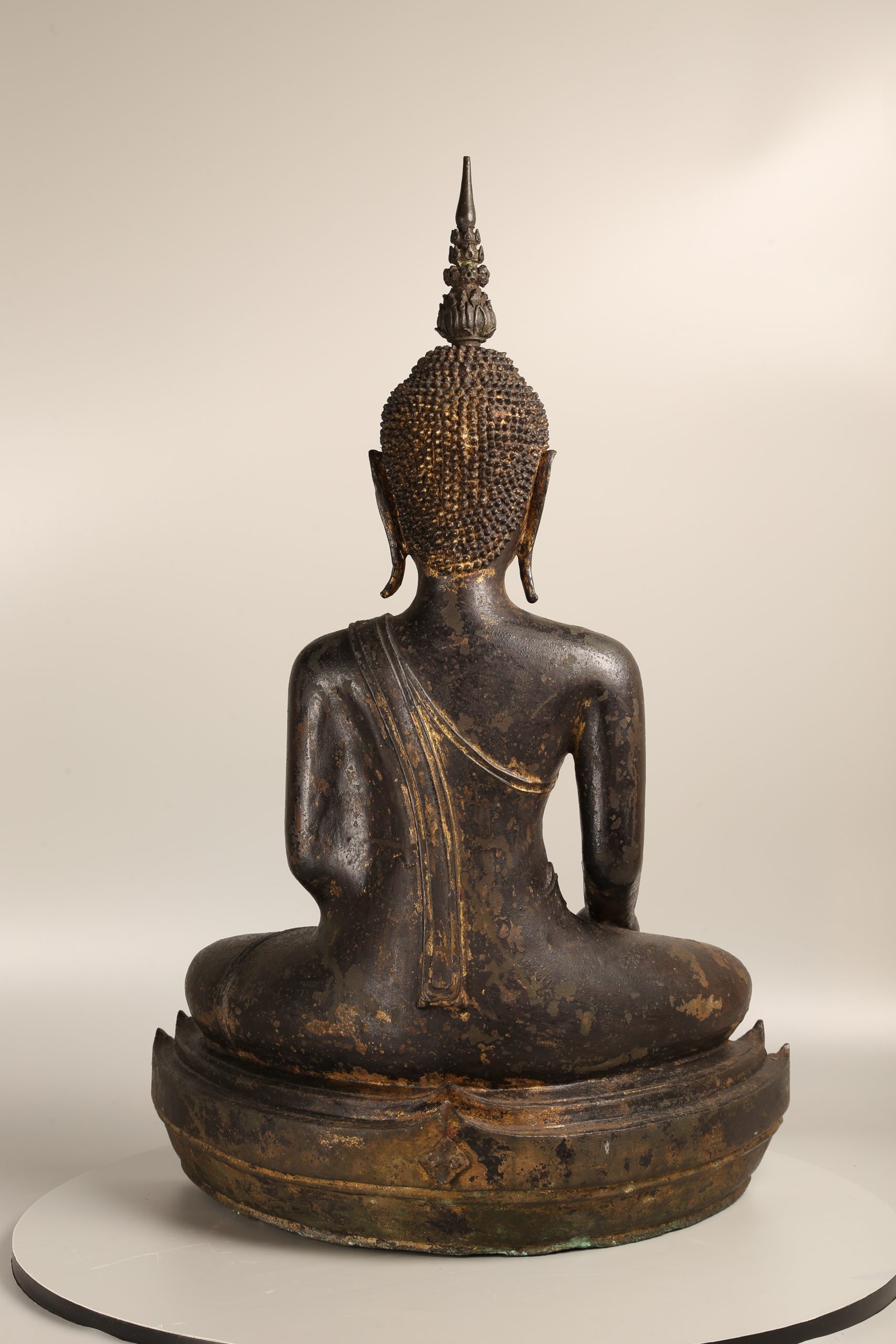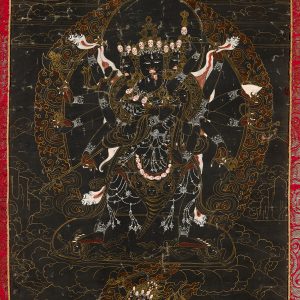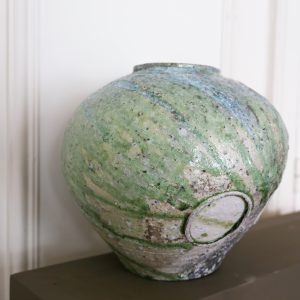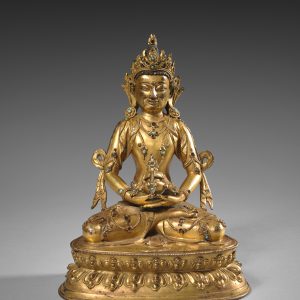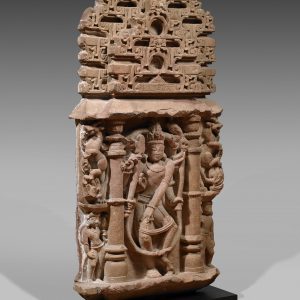Buddha Maravijaya
Bronze
Laos
16-17th centuries
H: 59 cm
Description
The rise of the Lan Xang kingdom
In the middle of the 14th century, the first Lao kingdom was founded after a Khmer occupation of the territory. A crossroads of influences, Laos retained many Khmer traditions, but was also inspired by its Thai neighbour, both politically and artistically. Adherents of Theravada Buddhism, or Buddhism of the small vehicle, the sovereigns encouraged the creation of religious images, which illustrate this syncretic tradition.
A representation of a serene Enlightenment
This image of Buddha, cast in bronze, is covered with a dark patina that reveals traces of gilding. The Buddha sits on a pedestal, represented in an attitude very popular in Thai art and also in Laos, namely sitting cross-legged with his right leg bent over his left. With his right hand, palm turned inwards, he performs the mudrā of taking the earth as a witness. Symbolising enlightenment and victory over Māra, this is one of the six canonical gestures of the Buddha at the main events of his life, repeated in Buddhist iconography.
Śākyamuni is depicted here during his Enlightenment at Bodgāya in Bihār, the place where Buddhas of past cosmic eras had experienced their Enlightenment. Sitting under a pipal, immersed in deep meditation, he resists the onslaught of Māra (‘Death’). The god of unfulfilled desires and the cause of the endless cycle of reincarnations, Māra feels his empire threatened by the discovery of a means of salvation that would be preached to creatures. He seeks to distract the Blessed One in various ways and then claims the throne of enlightenment for himself.
A devotional image
His hair is bounded by a border on the forehead and is made up of protruding curls, comparable to Thai representations. The cranial protuberance (usnîsa) is topped by a flame. His rounded face, with its supple shape, is full of serenity. His position, as well as his particularly elongated and pointed ears, are elements illustrating artistic syncretism with Thai art, while the modelling of the body and the hieratic nature of the representation bear witness more to a Khmer influence.
The half-closed eyes were once inlaid with mother-of-pearl and were intended to give the figure an almost hypnotic presence in the darkness of a sanctuary.
Provenance : Godfried Wauters’ collection.

